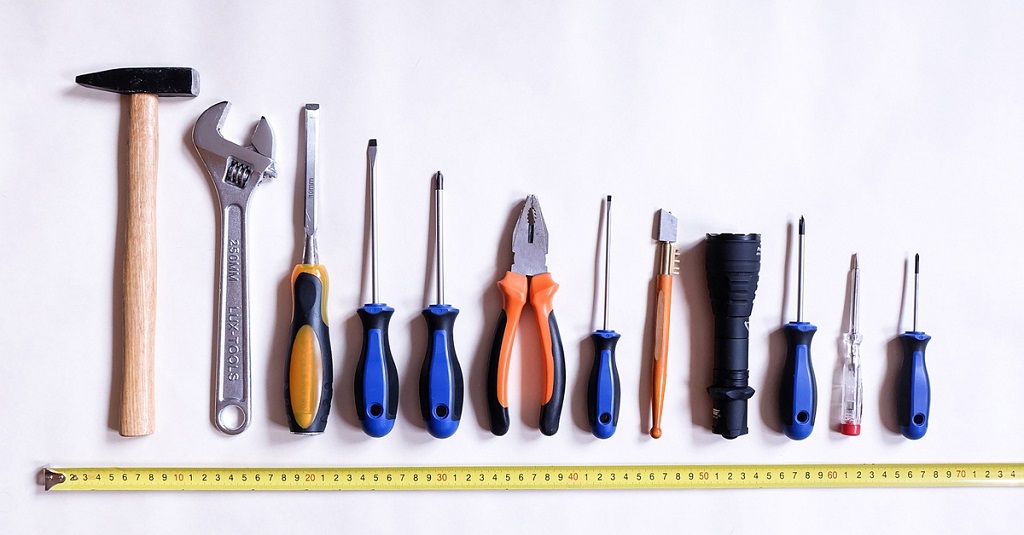It’s not all the time that you get immediate help from your local plumbers. Plumbing repairs can get delayed sometimes due to unforeseen circumstances. That is when you should be ready to apply first aid to your faulty plumbing. To be successful in DIY plumbing, make sure you have these 6 basic plumbing tools in your toolbox.
A wrench set
Your emergency toolbox needs about 3 types of wrenches to be able to perform basic plumbing adjustments. You need a wrench set that includes a pipe wrench, basin wrench, and adjustable wrench.
A pipe wrench would be very useful if you are going to work on the pipes. This large and heavy wrench is used to loosen or tighten nuts that hold the pipes together. Usually, a second pipe wrench is required to hold the pipe or fitting steady.
The basin wrench is specially designed for making faucet adjustments. It has a long shaft and swivel and a clamp-like apparatus. A basin wrench is a primary tool for tightening nuts and bolts located in deep, narrow spaces behind the sink.
An adjustable wrench will work best on hexagonal-shaped nuts, which can be found on most pipes. You can easily recognize this wrench with its firm jaw setting. Unlike other adjustment tools, an adjustable wrench will never slip during operation.
Pliers
Pliers, just like wrenches, are considered everyday plumbing tools. It has many uses, including tightening or loosening nuts and bolts that are too small for the wrenches to hold or grip. A pair of slammer pliers is also useful for reaching into tight spaces. A plier has different features that allow it to perform its primary function, which include the jaws, pipe grip, cutter, pivot point, and handles.
Plumber’s tape
Plumber’s tape, also known as thread seal tape, is a necessary addition to your plumbing toolbox. This tape is wound around a pipe thread to create a watertight joint. A roll of plumber’s tape can help stop water leaks in your home.
Before applying a plumber’s tape on threaded fittings, make sure to wipe the surface clean first. Then, wrap the tape in a clockwise direction.
Tubing cutter
When cutting pipes, the work becomes much easier when you use a tubing cutter versus a hacksaw. Depending on the type of pipe you are working on, using a tubing cutter can give you a cleaner cut. You can find tubing cutters designed for use on copper, PVC plastic, or PEX tubing.
Plunger
A clogged drain is one of the most common plumbing problems at home. That is why adding a plunger to your toolbox is very important. Plungers can help clear minor clogs in sinks, showers, tubs, and toilets. There are two types of plungers according to usage: a cup plunger and a flange plunger. A flange plunger is ideal for clearing toilet clogs as it is designed with an extended flange that fits the drain opening of a toilet.
Toilet auger
This tool is used for tougher clogs that the plunger fails to remove. A toilet auger is specially designed for clearing toilet clogs. Compared to an ordinary drain snake, it would be safer to use a toilet auger since it won’t scratch the porcelain of your toilet.
Take advantage of a 24/7 plumbing service
For your plumbing emergency needs at home, there is always a 24/7 plumbing team you can count on. You can forget about your DIY plumbing plans and leave the job to professional hands. This way, you can protect your plumbing and your home from any accidents or damages caused by incorrect or poor quality plumbing jobs. Talk to a licensed plumbing company today!




